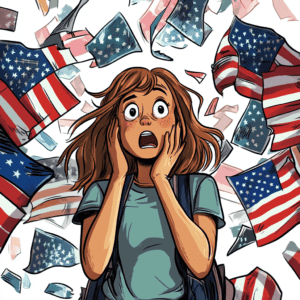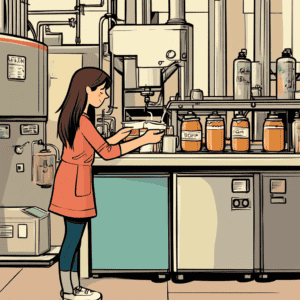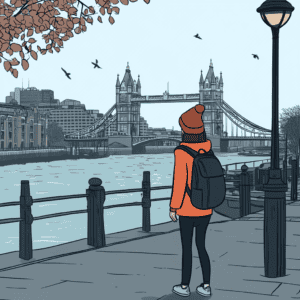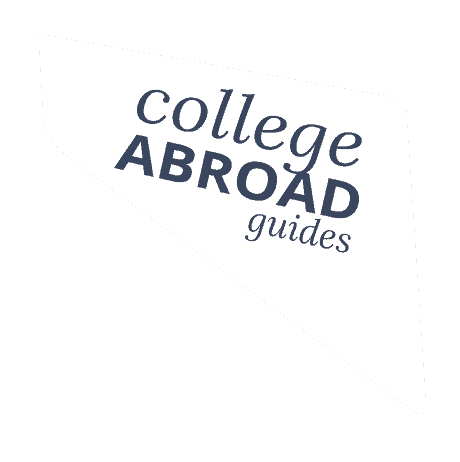The London Experience: What is King’s College London Like?
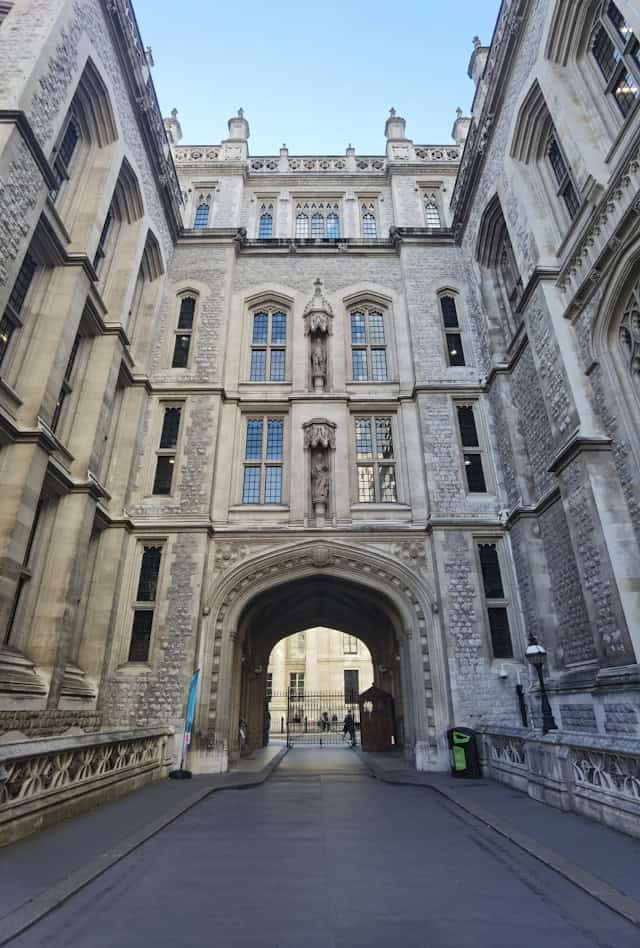
- Originally published
Table of Contents
King’s College London was one of the original Universities of London — today it’s still a constituent campus, with its own 5 break-off campuses. Needless to say, students find the university a microcosm of London itself. Those who thrive in a large, disjointed atmosphere where you’ll bounce like atoms off a hugely diverse range of people tend to thrive at King’s.
On the other hand, those seeking a campus experience, a cohort of assigned friends, and a cozy dorm near classes, clubs, and buddies do not.
For alternative Russell Group (the UK’s answer to the Ivy League) experiences in the city, try UCL (King’s sister school), LSE, or even Imperial.
King’s is for students who want to try the ultimate feat: juggling London’s best collegiate social life with one of its highest-ranked university degree programs. Good luck. Like all London universities, you’ll find ambitious financiers here, corporate interns-to-be who spend more time on LinkedIn than Tumblr, climate activists, disenchanted hipsters, and posh party girls. You might even find more of all of them here. If London is the UK’s melting pot, King’s is London’s.
Stats you Need to Know
Degrees: BSc, BA, MSci, MEng, BEng, iBSc, BDS, LLB, LLB, LLB with foreign credentials (Germany, Spain, France, and Hong Kong), MBBS, MNurs, BMus, MPharm
Majors:Traditional subjects across a range of departments like the medial and dental degrees, plus philosophy, physics, literature, and film. War Studies is a unique standout. Subjects in the world’s top 20, according to US News, are #2 psychiatry/psychology, #7 radiology, #16 surgery, and #17 neuroscience and behavior.
You won’t find many joint courses here, just classics served up well. For example, the computer science department offers majors/courses in computer science, AI, and computer science with management. Options including a year in industry are included, and you can opt for a BSc or a 4-year MSc from the very beginning of your studies.
Location: Central London, London, UK
Cost for international students: Science courses like AI with a year in industry set you back £33,450 per year (and add a 4th year to your bill). 3-year, non-lab courses like history cost international students £24,786. A 5-year medicine degree costs £48,600, and you can add another year for a 1-year, in-depth specialization, called an incalated BSc.
On-campus housing cost: From £6,200 for a non-en-suite in Wolfson House. They share bathrooms with the entire flat. 12 different residence options have costs up to a truly exorbitant £19,800 for a studio. There are also intercollegiate halls shared with other London universities to broaden your social circle.
FAFSA Funds: Yes
Abroad from abroad: Yes, summer, semester, and year-long options depending on your program. Some are odd: classics students find opportunities in Australia, New Zealand, or the USA, for instance. However, International development students find a decent spread: there are 14 countries to choose from and multiple universities in many of them.
Student body: 47,600 students from 160 countries. with 54% internationals (around 25,700).
Five adjectives: Social, diverse, urban, confident, detached
Hanging Out and Staying Safe in London
Hit up King’s College London’s (KCL) map of their facilities, and you can download 7 different maps: one for each of the school’s London campuses. Really, guys? In actuality, there are 5 total London campuses. This scattered university is a global top-40 school with tentacles all over London, but that can make it a tough place to find your “home.” For instance, students find that they might score a cheap dorm south of the Thames on Guy’s Campus but need to commute to Strand Campus for their classes.
We’ll focus on the Strand, the oldest and central hub of KCL. Located on the Thames in Holborn just south of LSE and next to Courtauld School of Art, the Strand campus is a good base camp from which to explore anywhere in central London. It also houses the programs of many of its students: here you’ll find arts and humanities, the school of law, natural and mathematical sciences, social sciences and policy, and the business school.
The Strand campus is smack in the middle of the action. Buildings are white stone and red brick edifices, befitting their post-Regency-era construction. King’s Building, originally constructed around 1830, employed the British Museum’s architect, who had designed Somerset House next door.
King’s is England’s 4th oldest university, chartered by King George IV and you’ll feel its prestige and history in some of its neoclassical facades, complete with. Voluminous porticos, and its prime location. King’s is a “sister” university to University College London (UCL), as both were founded during the 1820s. While UCL emphasized an open education, accessible to all, regardless of religious affiliation, King’s classical and Anglican roots are more traditional. Perhaps it’s pesky UCL students repeatedly kidnapping King’s stately paper maché lion mascot (who today resides behind glass near Bush House’s basement bar).
Then check out some of the classical and Neo-Gothic architecture, make your way to the stunning Maughan library. On your way, grab a coffee at Fleet Street Press. Named for the storied newspaper history in this corner of London. At the time of King’s founding, Fleet Street had long been associated with printing. It housed one of England’s first printing presses, and was home to bookshops as far back as the 16th century. Major newspapers didn’t leave for more expansive headquarters until the 1980s.
On its west side, campus is bordered by Covent Garden, where locals and tourists alike converge to shop at Covent Garden Market, London’s oldest covered market. The booths at Apple and Jubilee Markets are brimming with art, jewelry, crafts, and antiques and street performers add to the ambiance. Once a planned piazza in the style of Italy’s open-air public spaces, today it’s a great place to spend a Saturday morning.
“King's offers the London experience, not the campus experience. If you want to immerse yourself in London, and you want to live a real life, like a Londoner, King's is for you.
When evening rolls around, don’t forget that the west and eastern sides of campus are full of West End theaters. London’s “Broadway,” the theater district offers up world-class plays and musicals. And the student union helps students book discount tickets.
Art fans should know there’s more to London than theater, and King’s is in the heart of London’s visual arts attractions, too. It’s about a minute away from 180 Strand, a cultural hub where you can catch exhibitions, musical performances, and talks. It’s also a stone’s throw from the British Museum, the National Gallery, and other giants of the art world that offer free admission.
In the LSE chapter, we mention that Holborn is a neighborhood that many say “feels” safe but that comes with a disproportionately high crime rate per capita. But workers and tourists alike flood the neighborhood during the day. Imagine the crime rate of a local airport: it’s got 10,000 crimes per resident! But that’s because there are few residents in the hood, yet tons of people coming and going.
We didn’t hear King’s students telling us anything different. They mostly feel plagued by tourists, not criminals, in this clean central neighborhood.
“As a female living in London, I take precautions. I don't travel at times when I know I'm going to feel uncomfortable. It's precautions I'd take in any big city.
LGBTQIA+ and students of color students likewise say they experience some discomfort in London, but that they don’t truly fear for their safety. Many noted that they came to KCL because the city offered them ways to commune with their sexual and cultural identities that they just wouldn’t get elsewhere, even if the crime rates against them were also elevated.
From a world of food options to bars, concerts, and general comfort with diverse groups, London is the primary draw for KCL students looking for their own brand of safety — one where they can be themselves and still blend in with the crowd.
And at KCL, it looks like many have found just that.
The Lowdown on the Strand Campus
At the Strand Campus, there’s a mix of Neo-classical classroom spaces and “real” spaces where students can actually hang out between classes, study, and get work done. For example, law students get some coursework at the famed Somerset House, where Queen Elizabeth I once lived. Others will have their lectures in the equally iconic King’s Building. It’s a gorgeous facility, cavernous with white stone archways, a large café, a bar, and museum vibes.
But need to sit, chat, or work on a group project? You’re likely heading over to Bush House.
The former-BBC world service building is where future social scientists shop at the campus store, linger in exhibition spaces, and go to lectures in the cavernous auditorium. Its plant-based restaurant, Roots, is a standout for both its balcony view and yummy bowls, but prices aren’t always student-friendly.
“I like the 7th floor of Bush House because I can usually find a spot, and there are actually charging stations, so I can stay a while.
After your lecture is over, you’ll have to settle for hanging in the Quad, a concrete, outdoor corridor, or in the charming courtyard around St. Mary Le Strand, one of two churches emerging like islands from the middle of the street in between King’s Building and Bush House. There are benches galore. London’s commercial eateries are everywhere to be found, but the food trucks you’ll find in little concrete courtyards tucked between buildings are the most convenient way to recharge between classes.
“I've definitely had people pity me because I'm supposedly not getting a typical university experience. But I chose King's because it had more of a uni experience than some other London unis of the same caliber. So that is an odd feeling.
The best place to find a spot to study the afternoon away is at the Maughan Library. Walk 10 minutes to the library from here, and head for the ever-popular Round Reading Room. This spectacular triple-decker cake of a study space lets you read while surrounded by books stacked all the way up to the light-soaked glass ceiling.
If you can’t get a seat, try the Health and Wellness Room, where you can stretch out on bean bag chairs or read some mental health-related books to remind you to take a little time off from your studies. Once a public archive building, little metal holding cages and some building names (like the Rolls Café and Rolls Chapel) are named for the volumes of census records once stored here.
While overall reviews of KCL are mixed, and students here seemed honest about the negatives of attending, they were unified in their love of the campus facilities, if disappointed the campuses seem tailor-made to 1. Help students get in their 10,000 steps per days and 2. Feel like they’re lacking a true campus community.
“It's gorgeous. I never get tired of seeing Somerset House in December with its ice rink and Christmas decorations.
London university students are often out on Wednesday nights for “sports night”, which can give you a sense of community in a university known for blasé detachment — stereotypical students here live off campus and cultivate non-university friendships and jobs.
Ironically, they also have a reputation for having more fun than attendees of other London universities. To join them, hit up the Student Union’s Waterfront Bar to party hard on Wednesday nights or for pub quizzes or just a board game at other times. It’s a students-only space with some safety precautions for students, like CCTV, drink tampering testers, student ID checks for entrance, and policies that guard against discrimination and bullying.
You may not get a cohesive student experience at King’s, but that’s nothing for many students who find that all college-aged Londoners are their community. Student nights on Wednesdays throughout the city foster camaraderie, for example. There are also events like a student fight night for charity, with students from UCL or Imperial alongside those from King’s duking it out in the ring. There are even intercollegiate dorms. King’s has a reputation as the garden for social butterflies, and you’ll have plenty of opportunities to meet students from other universities, too.
What are KCL’s Dorms Like?
Accommodation is plentiful, either owned and managed by the university, or in private student dorms throughout London. But it’s not cheap.
King’s does have some affordable options. But there’s no guarantee you’ll get the cheap housing, and pricier housing can really break the bank, adding to the perception that King’s students are privately educated snobs (they’re not; 82% of students come from public school).
On the bright side, the pricy housing is absolutely gorgeous. Take the new Battersea Building, 2 tube stops away from Strand, with nicer bathrooms than most hotels, a top-floor gym and yoga studio, and rooftop patio with killer city views, you’ll be living better than most Londoners.
The only accommodation anywhere near Strand (and it’s actually across the river on the Waterloo campus) is Stamford Street Apartments. A red brick building reminiscent of a midwestern nursing home, It’s functional and impersonal, but outfitted with the basics like laundry, a gym, and a lecture space should you luck out and have a class scheduled there.
“The location really couldn't be more ideal. You can walk to about three grocery stores from here (Julia Markham), and there are pubs, coffee shops, stores, transport…just outside. I am very happy with the location.
Overall, housing is an odd proposition at King’s. With so many campuses, you won’t know if anyone in your classes is housed where you are, and the sense of community can be thin. However, campus dorms are often cheaper than similar private dorms scattered around London.
Remember, you’ll need to pad your budget with transportation fees since you’ll need to jet between your dorm and classes.
Students tell us the intercollegiate halls shared among London universities can be some of the best bargains as well as experiences. They’re gigantic, which can mean they’re both loud and friendly, and while you might make some friends who don’t even attend your school, that’s not much of an issue when students won’t come across acquaintances in gen-ed courses anyway. In London, you’ll be in your own course with a narrow band of fellow course-mates. You can’t be housed with them, so you might as well expand your network in greater London.
KCL Classes and Student Activities
Academically, King’s aims to crack the chokehold that Oxford and Cambridge have on prestige in the UK. As part of the “Golden Triangle for Research,” including Oxford, Cambridge, and London, the university helps hold up its part of the bargain. It also helps budding entrepreneurs bring their intellectual property to market.
For undergraduates, that can feel like a benefit. After all, lectures given by a field’s top research stars can feel special and cutting-edge. And a select few undergraduates might even find research institutions let them get up close and personal not only with professors, but with co-writing articles, winning killer internships, or starting their own businesses with the backing and consul of the field’s most influential people.
Those looking for a future in research and connections to clinical and research excellence get resources galore at King’s, from help crafting proposals to funding, facilities, and faculty all directed at supporting budding researchers. Universities like King’s draw undergraduates who want their spot on the research ladder.
King’s is a good place to earn that spot. According to The Times, King’s is the world’s 38th-best university, excelling in research power and career training, but with its lowest marks in teaching. That’ likely reflects that faculty are incentivized to spend their time on topics such as discovering the structure of DNA, like its biophysicists Rosalind Franklin and Maurice Wilkins, rather than honing their teaching craft.
Undergrads can excel here. You’ll find notable alumni like South African Archbishop Desmond Tutu, who earned divinity degrees at King’s in the 1960s. He followed in the footsteps of notable alumni like John Keats and Virginia Woolf.
Standout programs are clinical medicine, including the Florence Nightingale School of Nursing, Midwifery and Palliative Care and the Institute of Psychiatry, Psychology, and neuroscience. Law and international studies (including war studies and security studies) are also strong.
Medical students in particular flock to King’s, one of the biggest medical schools in the UK. There are undergraduates and postgraduates all converging on Guy’s Campus, creating large, mixed cohorts where you won’t know everyone in your clinical experiences from class.
International partnerships are another feather in KCL’s cap, which has faculty and student exchange programs and more global partnerships than many other universities, as well as deep ties to London’s hospitals (for its medical students) and cultural institutions (for humanities scholars). For instance, medical students can score research placements at elite institutions around the world, from Johns Hopkins to McGill University. For cultural and global connections alone, it’s fair to say that King’s is itself the social butterfly of the Russell Group.
At King’s, you’ll get a typical British university academic schedule and teaching style. The year is split into two course sessions with 4 classes in the fall and 4 more in the spring. Lectures with seminar break-out group discussions are common, and final exam weeks consist of testing sessions, or simply ask students to turn in final essays and research papers.
“Usually the tutorial groups are really small, two or three people. But sometimes they can be really large and you will have to book individual meetings.
Students say they’re able to access the support they need during these terms , from tech support to disability services and extensions when they can’t fit everything in. But they also warn that the pace is frenetic and students who fall behind can’t expect to claw their way back by the end of term.
“The feedback I get is outstanding. I have never thought, ‘Oh, I don't know what they want. I don't know how to improve.' I do get specific ways to improve. I don't ever get generic comments that my friends get, like that tell them to go more in depth, while of course, they wrote the maximum number of words already, so they don't know how.
King’s students are known for taking academics seriously. Students often come to KCL for the advantage of London’s diverse internship pool, where they’re excited to work with diverse populations.
Of course, students who come to King’s for its research prowess also excel in a flexible academic environment where they can design their own final-year research project using a method they’ve studied — and applying it to anything they like. The student-led approach can take more motivation from students, but if you’re looking to continue your research career in grad school, it might be just the ticket.
“I loved that I could pick a project just off the menu, but I could also design my own. The lecturers here really encourage you to explore things on your own, which I have found valuable.
King’s has bonus social power when it comes to societies, too — there are over 300 societies and 70 club sports where you can find your people. The American and Canadian group is sure to help you acclimate (or retreat to familiar cultural territory when it gets tiring). There’s also an American politics society so you don’t miss any of the action back home. Biochemistry, hematology, and womxn in biosciences help med students develop as future professionals. Sports clubs like hiking, cheer, kendo, squash, American football, ultimate frisbee, and surfing are also around to keep students in shape while they juggle their coursework.
There’s one caveat: sports can be inaccessible to students. Because KCL is in central London, societies and clubs have to rent fields and venues all the time, making participation fees high.
“You have to learn to balance your time with academics and extracurriculars. Academics can be very stressful because you're really on your own and a lot of what's expected of you is self-directed. You need to go above and beyond and you can't achieve a first if you're not doing extra.
Students at King’s get a typical university calendar, class structure, and the all-too-common stress that comes from a heavy workload, but they also get some unique perks that come with the London experience. For many, that can be a perfect combination.
Applying
Apply through the British UCAS portal by January 31 of the previous year. You’ll submit grades, a single letter of reference, and a personal essay. For a degree like history, the requirements are AP scores or 5, 5, 5, 4, and 4. Alternatively, you can apply with a combination of AP scores, SAT scores, and subject tests. Some examples are 3 AP tests with a score of 5 and a 28 on the ACT or 1380 on the SAT. SAT subject tests are in vogue here, so you can substitute AP test scores for these tests.
Related Posts

Jessica Share
Jessica is the writer, Ph.D., and mom-of-an-abroad-student-in-the-UK at the helm of College Abroad Guides. When she's not asking college students where the coolest place to hang out in their city is, she's figuring out how she can make $60 imported Greek oregano potato chips and £50 British bacon potato chips appear on her doorstep for the cost of a local bag of Lay's.

